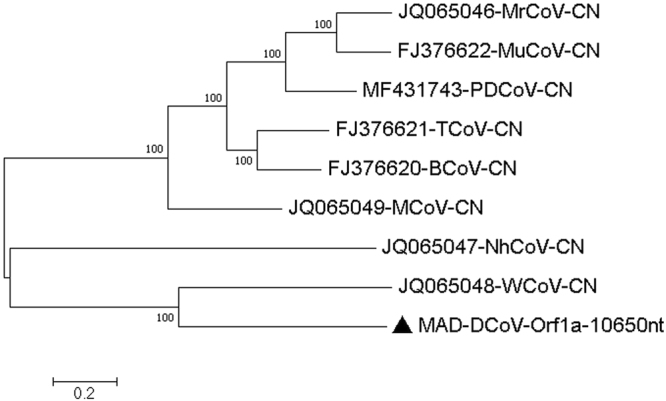Figure 5.

Molecular Phylogenetic analysis by Maximum Likelihood method of DCoV Orf1a gene The evolutionary history was inferred by using the Maximum Likelihood method based on the General Time Reversible model72. The tree with the highest log likelihood (−87186.89) is shown. The percentage of trees in which the associated taxa clustered together is shown next to the branches. Initial tree(s) for the heuristic search were obtained automatically by applying Neighbor-Join and BioNJ algorithms to a matrix of pairwise distances estimated using the Maximum Composite Likelihood (MCL) approach, and then selecting the topology with superior log likelihood value. A discrete Gamma distribution was used to model evolutionary rate differences among sites (5 categories (+G, parameter = 1.4644)). The tree is drawn to scale, with branch lengths measured in the number of substitutions per site. The analysis involved 9 nucleotide sequences. All positions containing gaps and missing data were eliminated. There were a total of 10137 positions in the final dataset. Evolutionary analyses were conducted in MEGA763.
